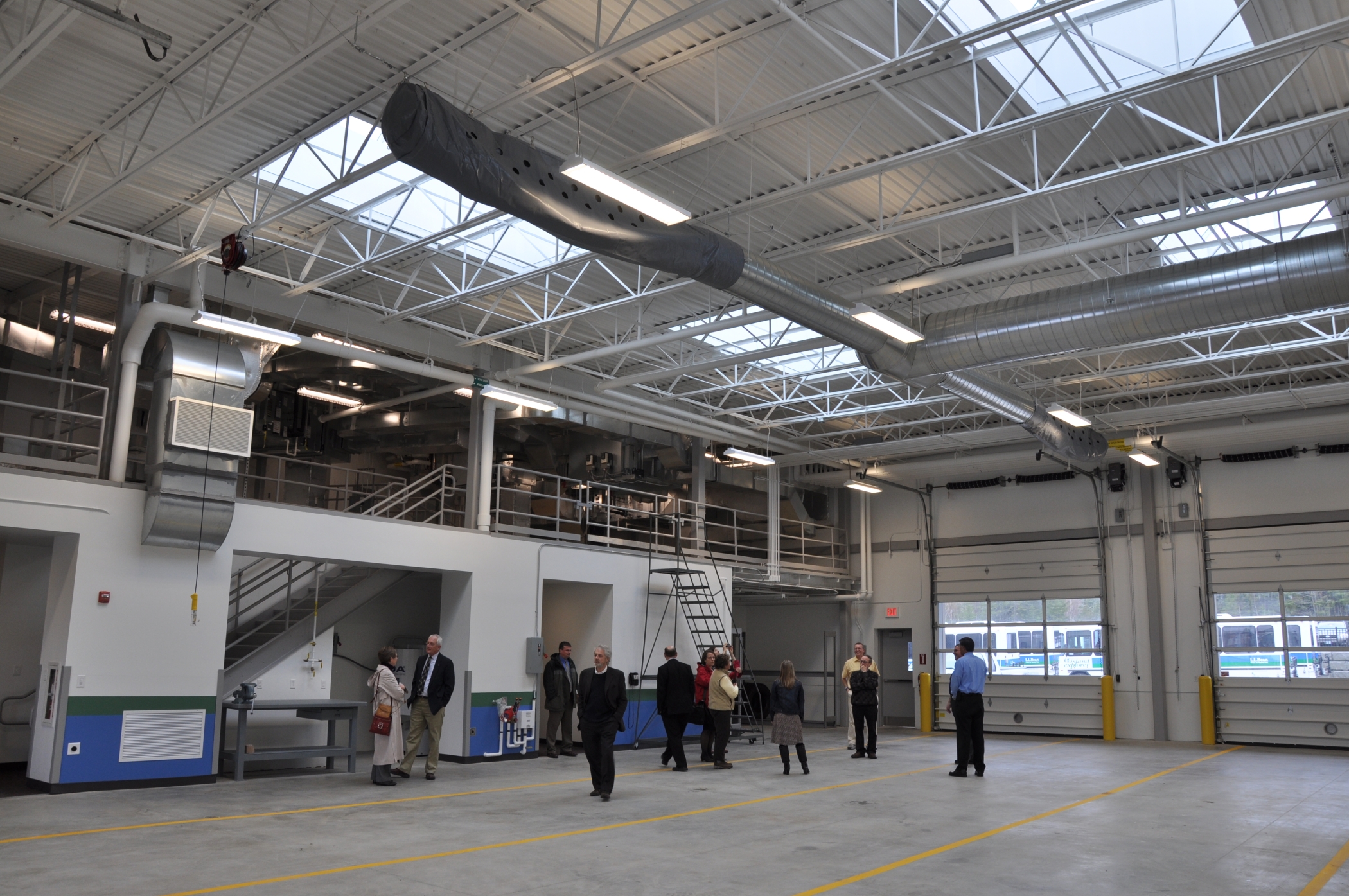Thornton Tomasetti announced that the Acadia Gateway Center administrative and maintenance facility has received LEED Gold Certification. Fore Solutions, the green building consulting company acquired by Thornton Tomasetti in 2012, provided LEED consulting services for the project located in Trenton, Maine at the gateway to Acadia National Park, one of the most visited national parks in the United States.
Fore Solutions was hired by the mechanical engineer on this project, Allied Engineering in Portland Maine, to provide LEED consulting. In this role, Fore Solutions reviewed the energy model, tracked compliance with LEED throughout design and construction and reviewed and submitted LEED documentation to the Green Building Certification Institute.
The Acadia Gateway Center administrative and maintenance facility is the first phase of a multi-phased project to implement a Transportation Demand Management Plan for Acadia National Park in order to reduce automobile traffic on Mount Desert Island. Phase I of the project consists of a 22,000-square-foot center located on Route 3 in Trenton, Maine that will function first as a bus maintenance and storage facility for the seasonal Island Explorer bus system and as a summertime park-and-ride parking lot for people who want to ride the propane-powered buses onto Mount Desert Island.
The second phase will include a visitor center and intermodal facility for the Island Explorer bus service.
Key points:
- This $14.7-million facility was funded through a combination of federal and state sources, including $11.6 million from the Federal Transit Administration.
- The Acadia Gateway Center is anticipated to reduce more than 10 million vehicle miles per year with the Island Explorer buses. Local bus routes will stop at the park and ride on-site to connect building visitors and staff to the surrounding area. Preferred parking for fuel-efficient vehicles is being provided for employees and visitors.
- Water used to wash buses is collected, filtered and reused – reducing water demand by 88%. No irrigation will be used on-site and temporary irrigation will only be provided for one year.
- The project demonstrates a 38.3% improvement in the building performance rating compared to the baseline building performance in ASHRAE-90.1-2004. Energy efficiency measures include an improved thermal envelope, high-efficiency glazing, reduced interior lighting power density and high-efficiency HVAC systems.
- Solar collectors are being used on the project to pre-heat domestic water for the domestic hot water system. Roof materials with a high SRI (Solar Reflectance Index) value have been installed on the roof.
- Materials with recycled content and local materials were used in the project wherever possible, and 70% of construction waste was diverted from landfills.
- Low-emitting adhesives, sealants, paints, carpet and composite wood materials are being used in the project.
- Accessible temperature and lighting controls have been installed for building occupants. +
Related Stories
Museums | Aug 11, 2010
Design guidelines for museums, archives, and art storage facilities
This column diagnoses the three most common moisture challenges with museums, archives, and art storage facilities and provides design guidance on how to avoid them.
| Aug 11, 2010
Broadway-style theater headed to Kentucky
One of Kentucky's largest performing arts venues should open in 2011—that's when construction is expected to wrap up on Eastern Kentucky University's Business & Technology Center for Performing Arts. The 93,000-sf Broadway-caliber theater will seat 2,000 audience members and have a 60×24-foot stage proscenium and a fly loft.
| Aug 11, 2010
Citizenship building in Texas targets LEED Silver
The Department of Homeland Security's new U.S. Citizenship and Immigration Services facility in Irving, Texas, was designed by 4240 Architecture and developed by JDL Castle Corporation. The focal point of the two-story, 56,000-sf building is the double-height, glass-walled Ceremony Room where new citizens take the oath.
| Aug 11, 2010
Carpenters' union helping build its own headquarters
The New England Regional Council of Carpenters headquarters in Dorchester, Mass., is taking shape within a 1940s industrial building. The Building Team of ADD Inc., RDK Engineers, Suffolk Construction, and the carpenters' Joint Apprenticeship Training Committee, is giving the old facility a modern makeover by converting the existing two-story structure into a three-story, 75,000-sf, LEED-certif...
| Aug 11, 2010
Utah research facility reflects Native American architecture
A $130 million research facility is being built at University of Utah's Salt Lake City campus. The James L. Sorenson Molecular Biotechnology Building—a USTAR Innovation Center—is being designed by the Atlanta office of Lord Aeck & Sargent, in association with Salt-Lake City-based Architectural Nexus.
| Aug 11, 2010
San Bernardino health center doubles in size
Temecula, Calif.-based EDGE was awarded the contract for California State University San Bernardino's health center renovation and expansion. The two-phase, $4 million project was designed by RSK Associates, San Francisco, and includes an 11,000-sf, tilt-up concrete expansion—which doubles the size of the facility—and site and infrastructure work.
| Aug 11, 2010
Goettsch Partners wins design competition for Soochow Securities HQ in China
Chicago-based Goettsch Partners has been selected to design the Soochow Securities Headquarters, the new office and stock exchange building for Soochow Securities Co. Ltd. The 21-story, 441,300-sf project includes 344,400 sf of office space, an 86,100-sf stock exchange, classrooms, and underground parking.
| Aug 11, 2010
New hospital expands Idaho healthcare options
Ascension Group Architects, Arlington, Texas, is designing a $150 million replacement hospital for Portneuf Medical Center in Pocatello, Idaho. An existing facility will be renovated as part of the project. The new six-story, 320-000-sf complex will house 187 beds, along with an intensive care unit, a cardiovascular care unit, pediatrics, psychiatry, surgical suites, rehabilitation clinic, and ...
| Aug 11, 2010
Colonnade fixes setback problem in Brooklyn condo project
The New York firm Scarano Architects was brought in by the developers of Olive Park condominiums in the Williamsburg section of Brooklyn to bring the facility up to code after frame out was completed. The architects designed colonnades along the building's perimeter to create the 15-foot setback required by the New York City Planning Commission.








